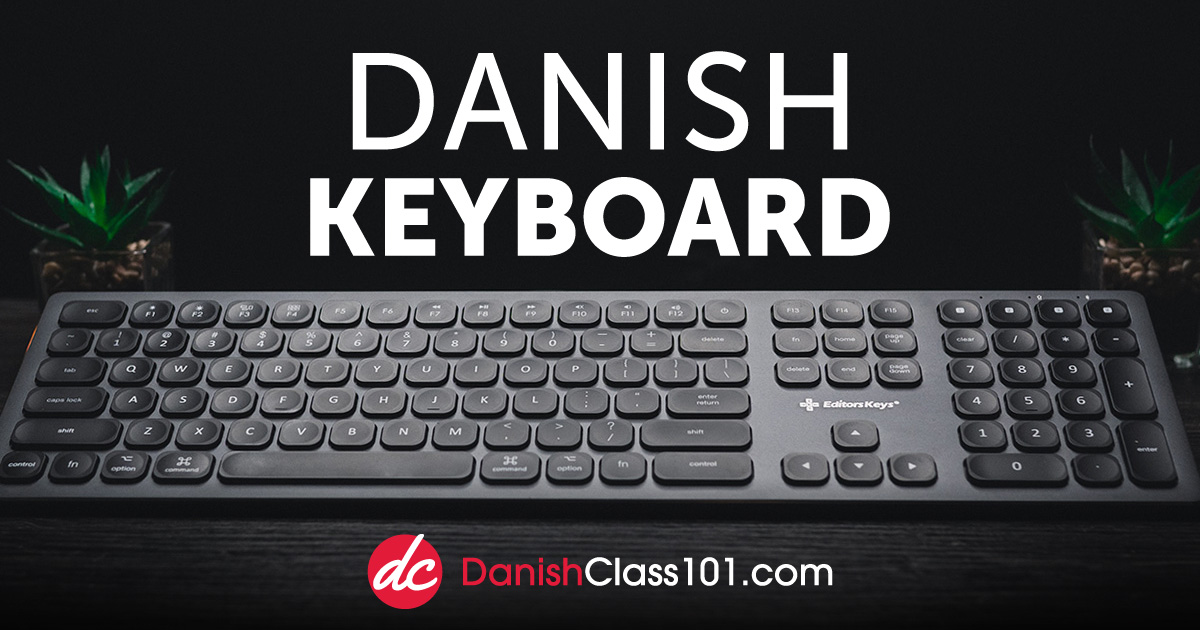All social interactions have to begin somehow, and the most common way to start a conversation in Swedish is to exchange greeting phrases. So how do you say hello in Swedish? Well, the most common Swedish word for hello is hej, though there are several more ways of saying hello in Swedish, both informal and formal.
For example:
- Hallå
- Hej hej
- God morgon
- God eftermiddag
- God kväll
- Tjena
- Tja
How do you know which of these greetings to use and when? Don’t worry—we’ve sorted it out for you.
All of these words mean hello, but some are informal, others are formal, some are slang, and others are used only in specific situations. The choice of a particular greeting phrase in Swedish can signify social status, how close you are as friends, and what roles you have in relation to each other.
Are you greeting a colleague, a manager, a close friend, or a family member? Swedes like to be informal and create a nice, easygoing atmosphere. For this reason, it can be difficult to decode the nuances and choose which greeting to use.
In this article, we’ll outline various ways to say hello and goodbye in Swedish, and guide you through how and when to use them. Are you ready? Let’s get started.

Table of Contents
- Saying Hello in Swedish: Things You Should Know
- Hello in Swedish: Formal vs. Informal
- The Most Common Swedish Greeting Words
- How to Say “How are You?” in Swedish
- Slang and Funny Expressions
- Longer Swedish Greeting Phrases
- Saying Goodbye in Swedish
- Conclusion
1. Saying Hello in Swedish: Things You Should Know
Whether greeting a friend, a stranger, a work colleague, or a manager, Swedes don’t use titles such as Mr., Mrs., Miss, or even the last name. In Sweden, everyone greets each other on a first name basis, even in more formal settings. Swedes simply like to create a nice atmosphere, and are very non-hierarchical and laidback.
When you meet someone you don’t know well or who you’re meeting for the first time, in Sweden it’s common to shake hands. But between friends and colleagues (and sometimes even between the manager and employees!) a hej, or “hello,” and a hug is a common way to greet each other. Hugs are nice, and so are Swedes!
Now, let’s look at how to say hello in Swedish when answering the phone, and what else to expect during greetings.
1- Answering a Phone Call
When answering the phone in Swedish, it usually suffices to say a simple Hallå! or “Hello!” and then to present yourself with your first name:
- Hallå! Det här är Stina.
“Hello! This is Stina.” - Hej! Det är Anna, hur mår du?
“Hello! It’s Anna, how are you?” - Det är bra! Hur mår du?
“All good! How are you?”
Swedes usually answer the phone at work by using a greeting phrase, like Hallå! (“Hello!”), their full name, and the company name:
- Hej! Du talar med Kalle Persson på Kalles företag.
“Hello! You are talking to Kalle Persson at Kalle’s Company.”
They can also answer by saying their name and the company name like this:
- Kalle Persson, Kalles företag.
“Kalle Persson, Kalle’s Company.”
When the call has been answered, Swedes often add another hello to the conversation before continuing:
- Hej! Du talar med Kalle Persson på Kalles företag.
“Hello! You are talking to Kalle Persson at Kalle’s Company.” - Hej! Det här är Anna Karlsson på Annas företag.
“Hello! This is Anna Karlsson at Anna’s Company.” - Hej hej! Vad trevlig att höra ifrån dig!
“Hello Hello! How nice to hear from you!”
2- Hello, Hello
It’s common for Swedes to repeat the greeting phrase several times, like in the example above. For example, Hej, hej (“Hello, hello” ) or tjena, tjena (a more informal “Hello, hello”). Sometimes Swedes also repeat the greeting word twice when initiating a call.
- Hallå, hallå!
“Hello, hello!” - Hallå, hallå! Det är Anna här, hur mår du?
“Hello, hello! Anna here, how are you?”
2. Hello in Swedish: Formal vs. Informal
1- Formal (Work)
How do Swedish people greet each other in the workplace?
Using slang at work isn’t a good idea in Sweden. A happy Shobre, which is slang for “What’s up?” can create a bad atmosphere. This is because not everyone is familiar with slang, and the communication in the workplace and between colleagues in Sweden is slightly more formal than between friends.
When you get to work, you can use a Hej, hej (“Hello, hello” ) if you don’t work in a more formal workplace like a bank. If you work in a more formal workplace, it might be better to say Hej (“Hello”), God morgon (“Good morning”), God dag (“Good day”), or God eftermiddag (“Good afternoon”).
2- Informal (Friends)
When close friends say hello in Swedish, slang is often used.
Depending on how close you are, an informal hello in Swedish can be tjena, tjenamors, tja, tjingtjong, hallå hallå, or even a shobre. Which greeting phrase you choose simply depends on how informal or playful you are with each other. A “hej” or “hej, hej” always works.
Some friends have their own expressions and greetings, such as Tjena mittbena! (“Hello middle legs”), Hej din gamla älg! (“Hello you old moose!”), or Tjena, tjena, hallå! (“Hello” three times in three different ways).
There are countless variations of greeting phrases between friends, and as long as everyone involved is in consensus about what you mean, almost anything is okay.
3. The Most Common Swedish Greeting Words
As you understand, there are countless ways to say hello in Swedish. Some can be used everywhere, such as Hej, hej, while others are linked to different social contexts. Some of the most common and versatile informal and formal ways to say hello are:
Informal hellos:
- Hej
- Hej hej
- Hejsan
- Tja
- Tjena
- Morsning
- Tjenamors
- Tjing
- Tjingtjong
- Haj
- Tjohoo
- Tjänis
- Hallå
- Hejsan
Hellos that work in all contexts:
- Hej
- Hej hej
- Hallå
- Hejsan
4. How to Say “How are You?” in Swedish
Another useful phrase to know is “Hello, how are you?” in Swedish.
It’s good to know that if a Swede asks you how you are, they really want to know how you are and aren’t just being polite. They also expect you to ask them how they are and listen to their reply.
In Swedish culture, the question Hur mår du? (“How are you?” ) is an important part of the conversation. All conversation beginnings include asking, waiting for the answer, and then returning the question:
- Hej!
“Hello!” - Hej, hej!
“Hello, hello!” - Hur mår du?
“How are you?” - Allt är bra, tack! Hur mår du själv?
“All is good, thanks! How are you?” - Det är bra tack!
“All is good, thanks!”
You can also say Hur är det? (“How are things?”), which is just as common.
- Hej.
“Hello.” - Hejsan, hur är allt?
“Hi, how are things?” - Fullt upp som vanligt. Hur är allt med dig?
“Busy as always. How are things with you?” - Bara bra, tack!
“It’s fine, thanks!”
5. Slang and Funny Expressions
Yo, helu, and halu are some funny and slightly different ways of saying hello and are all fairly common. Finnish Swedes, for example, use moj and mojn. On the other hand, shobre and shululu, which mean “Hello” or “What’s up?”, are mainly considered a bit “ghetto,” but are commonly used between friends.
For example, an initial conversation might sound like this:
- Shobre!
“Hello!” - Shobre, vad händer yao?
“Hello, what’s up with you?”
6. Longer Swedish Greeting Phrases
In addition to the shorter greeting phrases, there’s a long line of more informal and pretty funny phrases used to say hello in Swedish. These include: Morsning Korsning (“Hello Crossing”), Hallå där, köp blåbär! (“Hello there, buy blueberries!”), Hej i lingonskogen! (“Hello in the lingonberry forest!”), or Hallå din gamla räv! (“Hello you old fox!”).
Other examples of longer greeting phrases in Swedish are:
- Hur är läget?
Informal “How are you?” - Hur mår du?
“How are you?” - Det är trevligt att träffa dig igen.
“It’s nice to meet you again.” - Hur är din dag?
“How is your day?” - Det var länge sedan!
“Haven’t seen you in a long time!” - Hur har du haft det?
“How have you been?”
Saying hello in Swedish can also use a play on words. For example, a common way of playfully saying hello among really close friends is: Tack och hej, leverpastej! (“Thank you goodbye, liver pie!”).
Swedes love borrowing words and expressions from other languages, but prefer to pronounce them in Swedish. One can say that Swedes “Swedify” any words they like and reuse them for their purposes.
Hello, come and help me?
Say what? Yes, Swedish is sometimes a little confusing. When someone says Hej, kom och hjälp mig (“Hello, come and help me”), they don’t mean hello or that they need help. What they mean is that something is ugly, bad, a mess, or bonkers.
- Hon såg ut som hej kom och hjälp mig på festen igår!
“She looked like hello come and help me at the party yesterday!”
(“She looked like a complete mess at the party yesterday!” ) - Oj! Det låter inte bra.
“Oops! That does not sound good.”
7. Saying Goodbye in Swedish
There are several ways of saying goodbye to someone in Swedish, but luckily not as many as there are for saying hello. The most common informal goodbye phrases are Hej hej and Hej då.
In Sweden, there are also local varieties, whereof Hare gött and Ajöken are quite common. Also, Vi ses! (“I’ll see you!” ) and Vi hörs! (“We’ll keep in touch!” ) are very common ways of saying goodbye in any situation.
For more formal ways of saying goodbye, the Hej, hej and Hej då always work well. For even more formal endings to a conversation, you can use God morgon (“Good morning”), God dag (“Good day”), God kväll or God afton (“Good evening”).
8. Conclusion
Online learning systems abound, and it’s not easy to know which one will suit your needs best. This means you have to be careful and select a system with a good reputation, and that has proven longevity. DanishClass101, which is part of InnovativeLearning.com, ticks all the boxes! With millions of lesson downloads and over a decade of teaching, we can say with confidence that this is one of the best language learning systems on the web. Why is it such an excellent system? Let us count the ways…
1- Video Presentations with Native Speakers
Friendly native Danish speakers guide you step-by-step through the process of learning vocabulary, phrases and much more. They demonstrate correct pronunciation and emphasis of the words, so as to ensure that you speak like a native when you’re done! Watching the enthusiastic tutors makes not only for a pleasant and more personal experience – it also allows you to copy mouth and lip movements. It’s like learning from your own Danish friend in your own home!
2- Superb Flexibility with 24/7 Access to Learning Material – Anywhere and on Any Device connected to the Internet!
PC, Android, iPhone, iPad, laptop, even TV – whatever device you prefer! Go online with our FREE app to do your lessons, no matter where you are or which device you are using. All you need is a good internet connection to log on and learn to speak Danish at your own pace, in your own place!
3- Pronunciation Tool Ensures You Really Speak Danish!
In any language, correct pronunciation is often crucial. The nuances in language require this, or you could find yourself saying things you don’t mean. You will find our Pronunciation Tool invaluable to wrap your mouth around the correct way to greet in Danish!
4- Our Content is Always New and Dynamic
Every week, new audio and video lessons are uploaded, so as to keep our promise that learning Danish with DanishClass101 is always fun and exciting! In addition, you will get access to bonus material and basic Danish phrases. These are a fantastic way to build your comprehension and speaking skills!
5- Need to Fast Track your Learning? We Have the Solution!
Most learning activities are more fun when you’re not doing them alone. For this reason we developed Premium PLUS, which gives you a personal tutor – 24/7! Also, this way you’re likely to learn to speak Danish much faster!
So, if our lively Danish blog is not enough for you, just upgrade to Premium PLUS to get your very own teacher. Personalised goals and lessons based on your needs, assessment of your progress, non-stop feedback and many other super features makes this a very attractive option.
Say ‘Hello’ to a wonderful, exciting way to learn another language, and learn how to say ‘Hello’ in Danish in no time! You will be very happy you did!




















